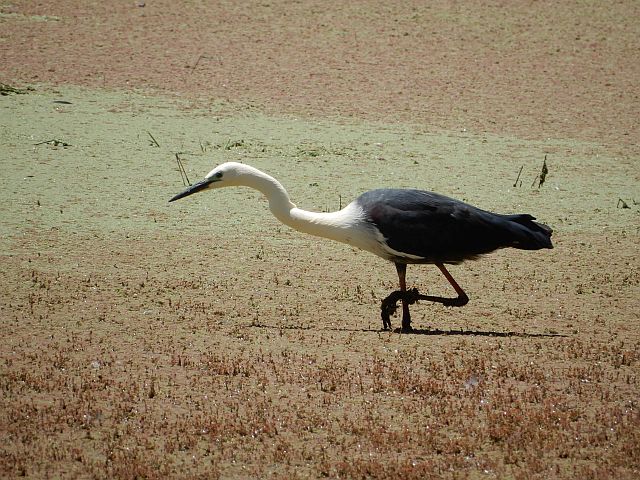
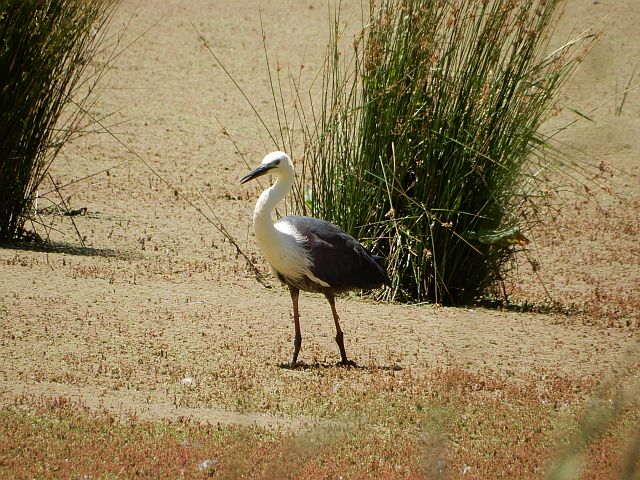 Not long ago I went to Moss Vale birding with Andrew Wood. It was a fine day for it and I discovered there is something eerie about the ponds found in this area, especially the changes in color you capture on camera. It is uncertain where the land ends and the water begins. Here are some photos of a white-necked heron found in the area.
Not long ago I went to Moss Vale birding with Andrew Wood. It was a fine day for it and I discovered there is something eerie about the ponds found in this area, especially the changes in color you capture on camera. It is uncertain where the land ends and the water begins. Here are some photos of a white-necked heron found in the area.
 At Bellambi I came across a family of swamphens. There was him and the Mrs. Plus junior. I managed to get a good photo of an adult with junior.
At Bellambi I came across a family of swamphens. There was him and the Mrs. Plus junior. I managed to get a good photo of an adult with junior.

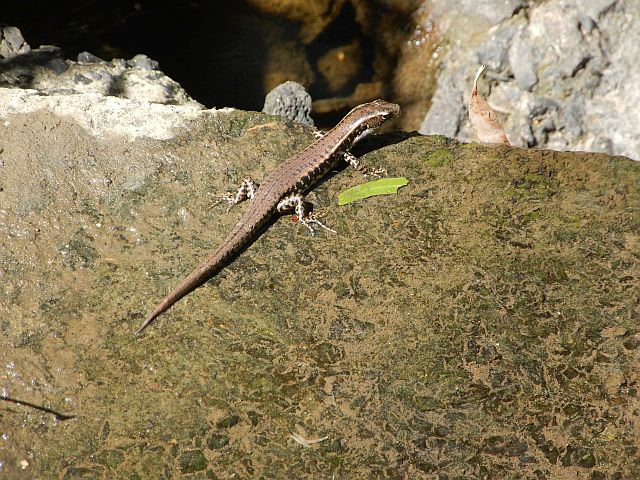 It is the month of the lizard in Corrimal, south coast, NSW, Australia. There are some fine examples about of Water Dragons and Skinks. They are harmless. There are also dragonflies. It is so good to see this life in our south coast waterways. It would be even better if we could keep these waterways clear of rubbish.
It is the month of the lizard in Corrimal, south coast, NSW, Australia. There are some fine examples about of Water Dragons and Skinks. They are harmless. There are also dragonflies. It is so good to see this life in our south coast waterways. It would be even better if we could keep these waterways clear of rubbish.

 There are some magnificent examples of street art in Corrimal not far from Coles. It is in a naive style but captures quite colorfully the history and the present day activities of the area. There’s football as well as our military.
There are some magnificent examples of street art in Corrimal not far from Coles. It is in a naive style but captures quite colorfully the history and the present day activities of the area. There’s football as well as our military.

 There are also wonderful acknowledgements to the trains that are so important to Corrimal’s existence, mining and Corrimal’s beach with its birdlife. The artist is Theo King.
There are also wonderful acknowledgements to the trains that are so important to Corrimal’s existence, mining and Corrimal’s beach with its birdlife. The artist is Theo King.

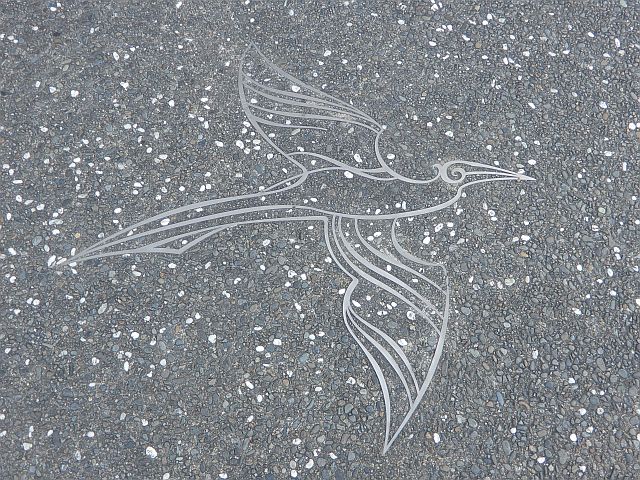 I visited Kapiti Island in New Zealand in February this year before the coronavirus became big news. I was looking forward to this trip to the island as part of my journey around the main north island and I wasn’t disappointed by what I did experience.
I visited Kapiti Island in New Zealand in February this year before the coronavirus became big news. I was looking forward to this trip to the island as part of my journey around the main north island and I wasn’t disappointed by what I did experience.
 We met our guides at the 180 Degrees Bistro and Cafe. There we were informed about what we could and could not take with us. We all knew already anyway from reading up on Kapiti but we were still glad they were being thorough. They didn’t want us to take contaminants with us and none of us going to Kapiti wanted to be responsible, for example, for bringing non-native plants in the way of seeds on shoes to the island.
We met our guides at the 180 Degrees Bistro and Cafe. There we were informed about what we could and could not take with us. We all knew already anyway from reading up on Kapiti but we were still glad they were being thorough. They didn’t want us to take contaminants with us and none of us going to Kapiti wanted to be responsible, for example, for bringing non-native plants in the way of seeds on shoes to the island.
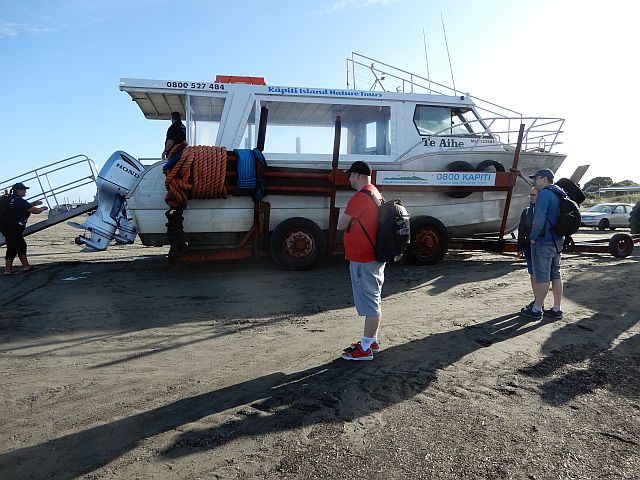 It took less than twenty minutes, once we were aboard the small vessel, to travel from Paraparaumu to this wondrous island.
It took less than twenty minutes, once we were aboard the small vessel, to travel from Paraparaumu to this wondrous island.
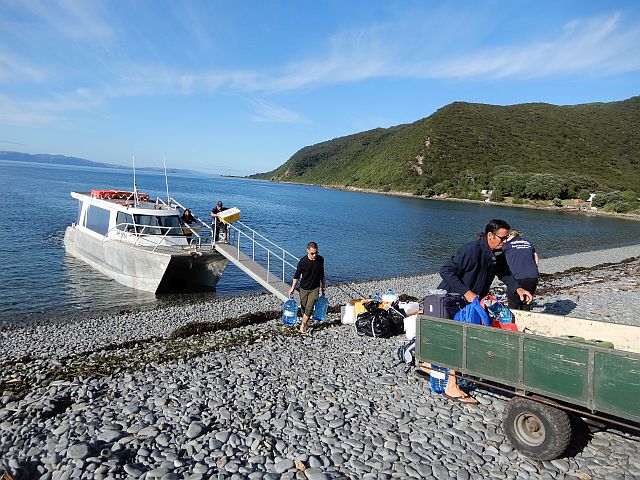 The shore was pebbly where we put in.
The shore was pebbly where we put in.
Once we were on the island, the guides took us to a hut. There we were informed that non-native species had been cleared out so that the natives could thrive. What’s more, natives were thriving including the gecko a guide had just picked up. It had big, dark brown eyes. It was about the size of a pencil and it wasn’t making any noise at all though it was fidgeting about in the guide’s hand before he put it on the ground so it could scurry away.
There was plenty to see on the walk I took with the guides. Incidentally, you must have good shoes or boots for Kapiti Island to get the most out of your visit. I had good shoes.
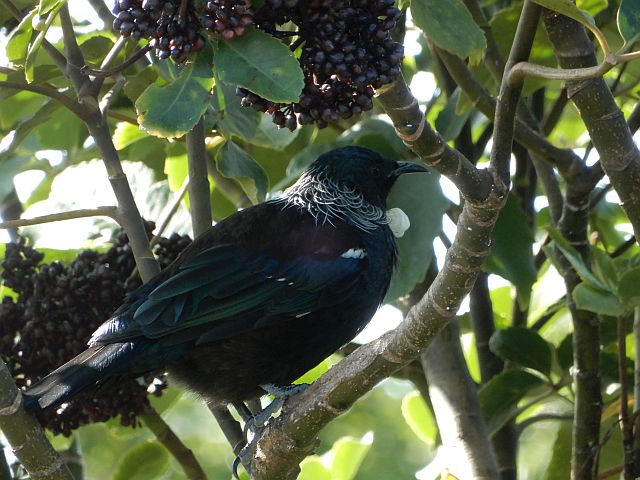
 The first bird of interest was the Tui. They are such a favorite with local artists and, as you can see, with good reason. It is such an unusual bird for an Australian to see and much loved by New Zealand birders.
The first bird of interest was the Tui. They are such a favorite with local artists and, as you can see, with good reason. It is such an unusual bird for an Australian to see and much loved by New Zealand birders.
I also came upon a number of Kiwi nests. Unfortunately, the inhabitants were fast asleep since it was daytime and Kiwis are nocturnal. Hence I didn’t get to see them.
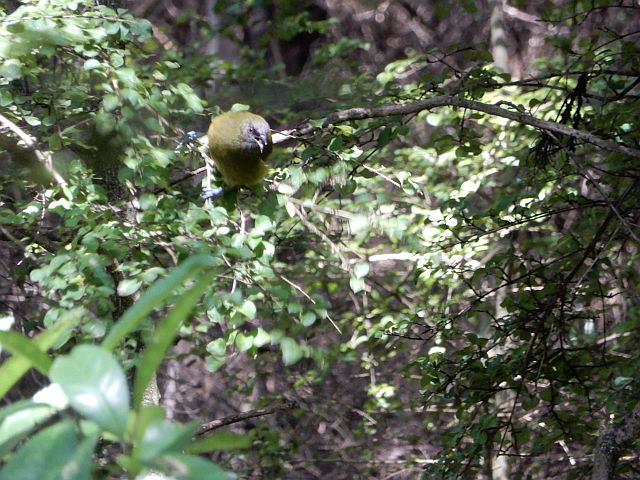 This Bellbird was a nice surprise. It was so green! I was lucky to get it on camera.
This Bellbird was a nice surprise. It was so green! I was lucky to get it on camera.
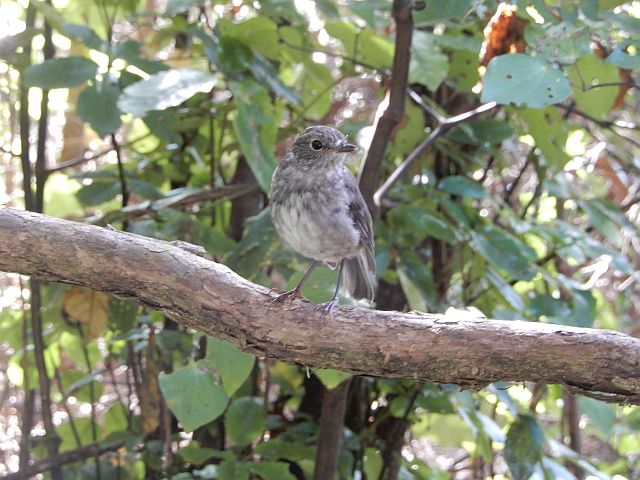
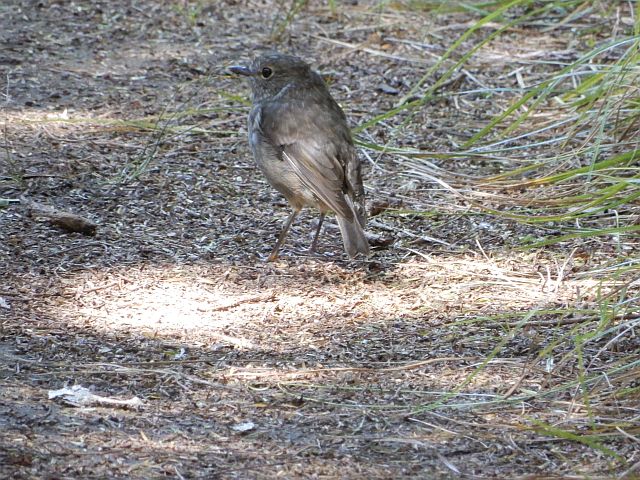 I came upon a hand full of North Island Robins including one softening up a bug to eat. He kept pounding it against a tree. It looked dead to me. I had no idea there was such a thing as a grey robin. The one I am used to seeing is the Eastern Yellow Robin found in New South Wales, Australia. A grey robin, however, is still a robin.
I came upon a hand full of North Island Robins including one softening up a bug to eat. He kept pounding it against a tree. It looked dead to me. I had no idea there was such a thing as a grey robin. The one I am used to seeing is the Eastern Yellow Robin found in New South Wales, Australia. A grey robin, however, is still a robin.

 There were New Zealand Pigeons about. They were in a mossy area not far from the lookout that was a bit of a climb to get to.
There were New Zealand Pigeons about. They were in a mossy area not far from the lookout that was a bit of a climb to get to.
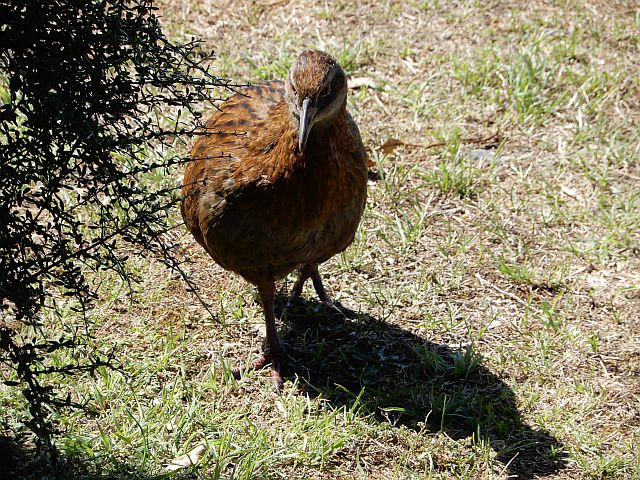 Roaming around the place where we were to have lunch there was a WEKA. I discovered it can really move fast when it wants to so it wasn’t that easy to get a good shot with my camera.
Roaming around the place where we were to have lunch there was a WEKA. I discovered it can really move fast when it wants to so it wasn’t that easy to get a good shot with my camera.
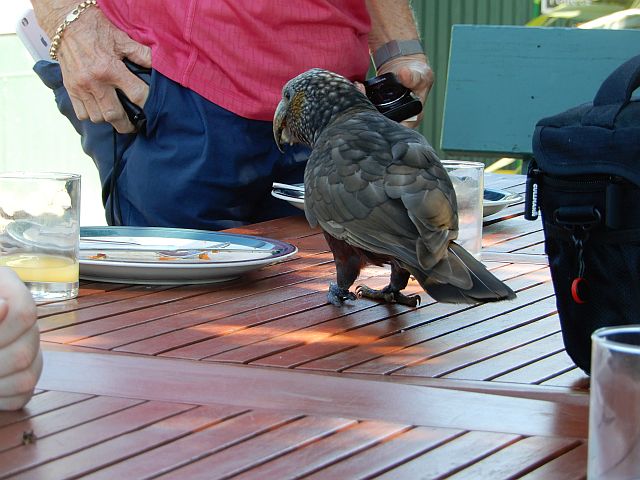
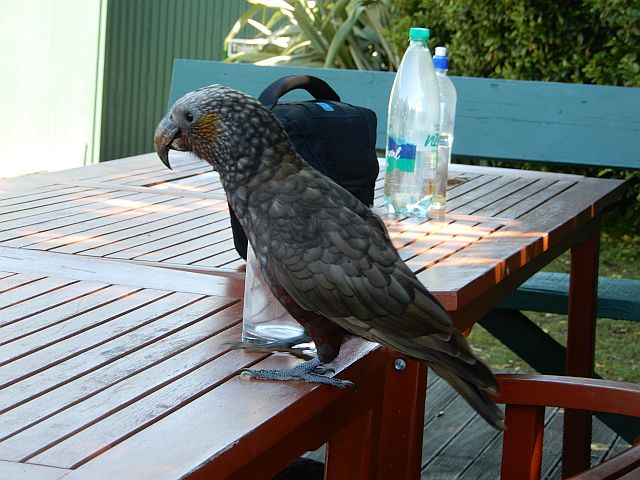 We had wildlife visitors while having lunch on the island. No one there with me minded this since we were all keen birders. It was also to be expected and something we were all looking forward to. If they didn’t arrive at the lodge during our meal we all would have been so disappointed. The Kakas, native parrots, joined us and were cheeky about it too.
We had wildlife visitors while having lunch on the island. No one there with me minded this since we were all keen birders. It was also to be expected and something we were all looking forward to. If they didn’t arrive at the lodge during our meal we all would have been so disappointed. The Kakas, native parrots, joined us and were cheeky about it too.
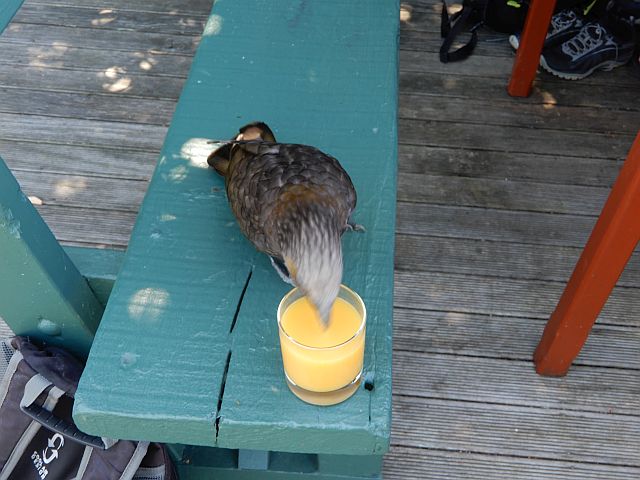
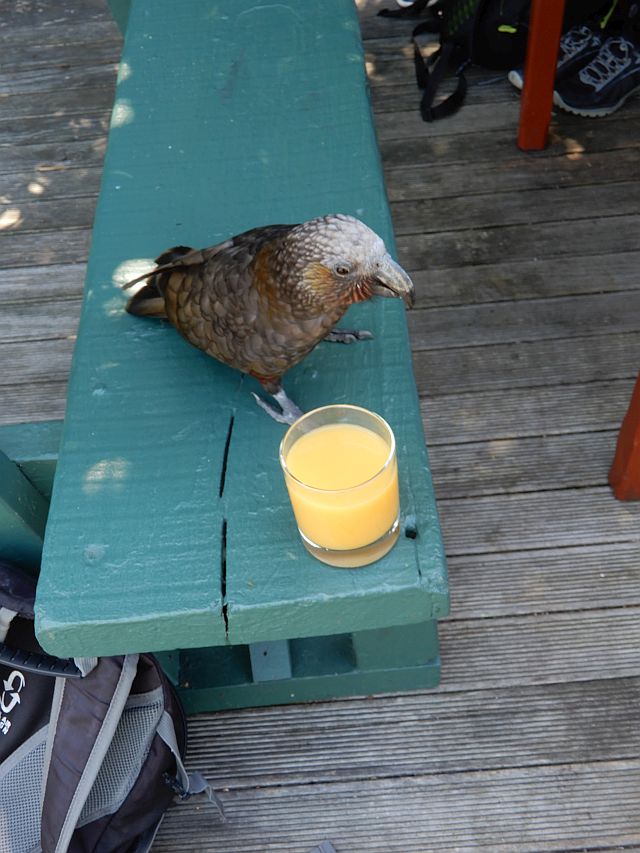 One of the kakas decided to sample my orange juice. I don’t think he particularly liked the taste.
One of the kakas decided to sample my orange juice. I don’t think he particularly liked the taste.

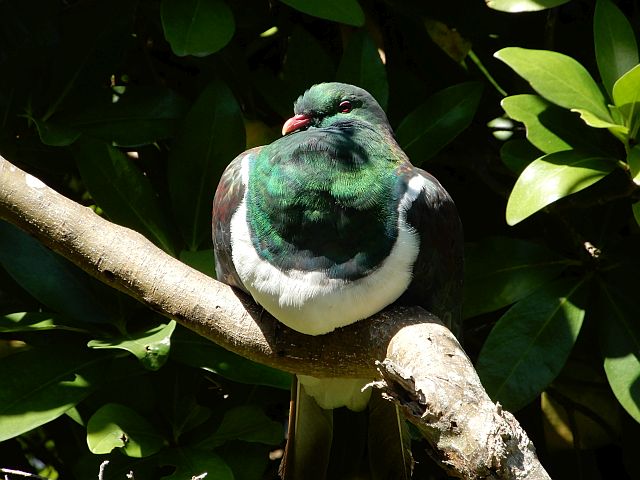 On the island there were these large pigeons called Kereru with a reputation for eating berries, getting drunk from them and falling off their perches. Well the pigeons are large. Still it is a wonder they have survived up to now if this getting drunk story is true.
On the island there were these large pigeons called Kereru with a reputation for eating berries, getting drunk from them and falling off their perches. Well the pigeons are large. Still it is a wonder they have survived up to now if this getting drunk story is true.
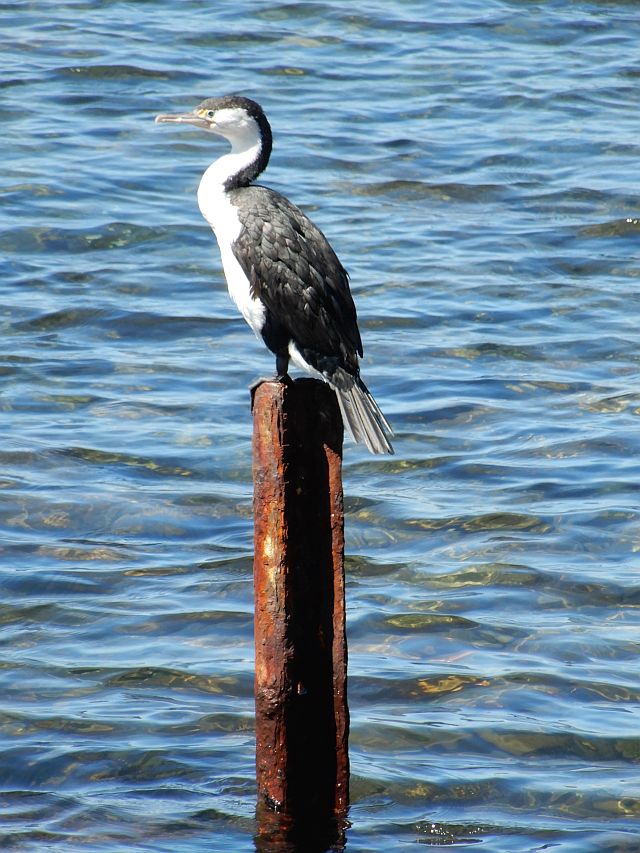
 On the island there were also Pied Shags and black-backed gulls. Why Shag for a name? I don’t know. Here is the boat, right on time, to take us back to the mainland. It was a tiring but enjoyable experience hard to forget. Is there more to see that I didn’t get a chance to see on this island? Yes. It would be great to make a return visit.
On the island there were also Pied Shags and black-backed gulls. Why Shag for a name? I don’t know. Here is the boat, right on time, to take us back to the mainland. It was a tiring but enjoyable experience hard to forget. Is there more to see that I didn’t get a chance to see on this island? Yes. It would be great to make a return visit.
Those who naysay Christmas often bring up commercialism.
Yes there are commercial aspects to Christmas. From what I know a lot of it began, at least for members of the British Empire, in Victorian times.
It was Prince Albert who introduced the custom of putting presents under a Christmas tree. (I don’t know how long this had been going on in Saxa-Coburg, his native land.) It was during the 19th Century that the giving of Christmas cards and also postcards got going. Snow globes were also invented in this time period.
All up, the money making aspects of the silly season has been with us a long time. It goes hand in hand with family get-togethers and the desire to do something good for someone else. Charities have been known to do well this time of year as we approach Christmas Day.
Yes, it isn’t all about commercialism. There has always been the goodwill aspect. In December 25th 1914, fighting stopped on the Western Front and young men on both sides stopped killing each other for a while to celebrate Christmas. In some places on the line they even played soccer together. Can Christmas ever bring peace on Earth? The answer is probably not but, if it stops violence happening for even a day somewhere, that’s okay by me.
Right now I am reading Alan Marshall’s autobiography I Can Jump Puddles (1955). It is about someone who contracted polio as a boy and so grew up with crutches but still a good attitude toward life. It seems he found adults more problematical than fellow children when it came to his dodgy legs. He didn’t want useless sympathy but just to get on with living.
I can Jump Puddles is also about an Australia filled with horses and men and women of the land that is fast fading from our collective memory. How will we be seen decades from now when the changes that are happening take root? I don’t know.
Marshall doesn’t paint a completely rosy picture of those days of his youth. There were the well to do and the poverty stricken. There was a mystery illness that crippled the young and the old if it didn’t outright kill them. He wouldn’t work in an iron lung comes from those days of polio.
Of the television shows too odd to capture a good audience base when first introduced to the public there was Captain Nice (1967) starring William Daniels. It was about a police scientist who invents a super vitamin pill and thus becomes a superhero. He can only become the hero, however, by swallowing one of his pills. Despite being a comedy, this was the closest thing to a superhero series I thought that actually had potential at the time. Sadly not enough viewers saw it my way.
There was also My Mother the Car (1966-1967) starring Jerry Van Dyke. I enjoyed it but maybe it was too offbeat for its time. About a man whose dead mother comes back in the spirit of an old car, it had its moments of light hearted comedy.
The Girl from UNCLE (1966-1967) starring Stefanie Powers in this spy romp spin-off of The Man from UNCLE never, as far as I know, made it to Australia. I only knew about it in the day through a comic book that was put out when the show premiered in the USA. I was hoping it would turn up on Australian television. The Man from UNCLE was only ever semi-successful with viewers so maybe there just were too many spy thrillers on television at the time. It seems that 1966 and 1967 were the years for daring efforts that didn’t always pay off.
Meanwhile, in 1966, Batman starring Adam West was a surprising success. The costumes were spectacular and no one seemed to mind that the stories and characters were outlandishly goofy, so sometimes offbeat does work.
Get Smart (1965 -1970) starring Don Adams and Barbara Feldon was a comedy with bite and its fair share of weird that caught a large audience and kept it. Unfortunately all the movie spin-offs were stinkers. The last one I saw had 99 as a sour-puss whereas Barbara Feldon’s 99 always had a soft spot for Max and wanted him to be a success.
Fast forwarding five decades or so, Pushing Daisies (2007-2009) starring Lee Pace ran for only two seasons and, as far as I am concerned, went before its time. It is about a man who can raise the dead but only for an hour. If he doesn’t put them back to being dead during that time then someone else has to take their place at being dead. It is also about pies and weird aunts.
Quirky, however, doesn’t always win the day even with me. The Watchmen live action television series (2019) starring Regina King is without a doubt a disaster. It drifts quite a distance from the illustrated novel and from the animation of the illustrated novel to disappoint many a DC fan. Also it is thoroughly politically correct. That aside, the special effects budget for the first and only season seems to have gone in the first ten minutes of the first episode making for a nice beginning but that’s it. This isn’t so much an odd television show as something really sad that should have been made a lot better with more thought behind it.

 Not long ago I went to Moss Vale birding with Andrew Wood. It was a fine day for it and I discovered there is something eerie about the ponds found in this area, especially the changes in color you capture on camera. It is uncertain where the land ends and the water begins. Here are some photos of a white-necked heron found in the area.
Not long ago I went to Moss Vale birding with Andrew Wood. It was a fine day for it and I discovered there is something eerie about the ponds found in this area, especially the changes in color you capture on camera. It is uncertain where the land ends and the water begins. Here are some photos of a white-necked heron found in the area.


























